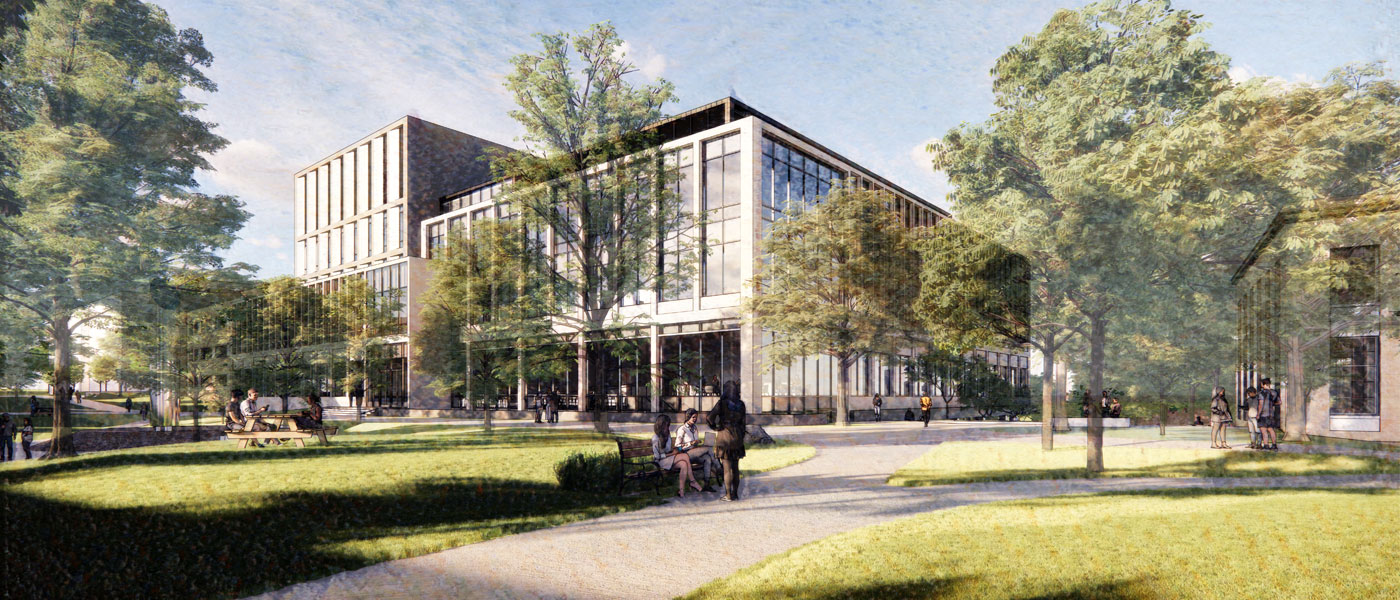Ahead of schedule, and well ahead of a ceremonial groundbreaking, Case Western Reserve University surpassed a milestone fundraising mark in support of the institution’s Interdisciplinary Science and Engineering Building (ISEB).
Private commitments of over $100 million have been secured toward the $300 million research facility. Half of the project’s overall expense is covered through century bonds, issued in 2023, with the balance funded through philanthropy. Groundbreaking on the five-story, 189,000-square-foot research building, on the university’s Case Quad, is set for late October.
“The overwhelming support we’ve received for this project is a testament to the generosity of our friends and alumni, and to the anticipated impact the ISEB will have on advancing our research enterprise,” said Case Western Reserve University President Eric W. Kaler. “The ISEB promises to further catalyze our research, interdisciplinary collaborations and discoveries that change lives.”
When it opens in the fall of 2026, the ISEB will bring together scholars and researchers from the university’s Case School of Engineering and College of Arts and Sciences to address some of the critical issues of today and the future—including climate change, applications of artificial intelligence and improving health outcomes.
“The ISEB will be a transformative, collaborative space—attracting researchers of vastly different disciplines to achieve common goals.” said Aarti Chandna (GRS ’88, computer science), who, with her husband, Asheem Chandna (CIT ’86; GRS ’88, computer engineering), co-chairs the project’s fundraising campaign cabinet. The couple has committed $5 million to the project.
“This interdisciplinary approach, and the opportunity it presents, has fueled this initial outpouring of investment from alumni, community leaders and institutions,” she said. “Like us, they see the promise of the ISEB, are looking forward to breaking ground in October and watching this vision take shape.
Among the project’s earliest supporters were alumnus Roger Susi (CIT ‘77) and his wife, Kayoko, who pledged $25 million to the effort. “Seeing Case Western Reserve researchers from multiple disciplines—faculty and students—having an environment to come together, to exchange ideas and solve today’s greatest challenges is inspiring.” he said. “We see a vast potential for ISEB to not only produce world changing solutions, but also bring the university elevated stature the world over.”
When it opens in the fall of 2026, the ISEB will house modular labs and adjustable spaces including wet labs, dry labs, spaces with movable glass walls, areas for quiet conversations, and a ground-level café—all designed to facilitate collaboration, chance encounters and group discussions.
In addition to collaborative and welcoming spaces on the building’s interior, the 12,000 square feet Tinkham Veale Gateway will serve as the university’s central connector from the Martin Luther King Jr. Boulevard to Case Quad. The fully accessible path will offer patio space and greenery with ample seating for individual and group study.
“Since his graduation in 1937, Tinkham Veale showed unwavering commitment to the university, and we are pleased to uphold that legacy,” said Dan Harrington, chairman of the Veale Foundation. “The ISEB and the outdoor gateway embody the spirit of collaboration and connectivity that he valued as a student.”


